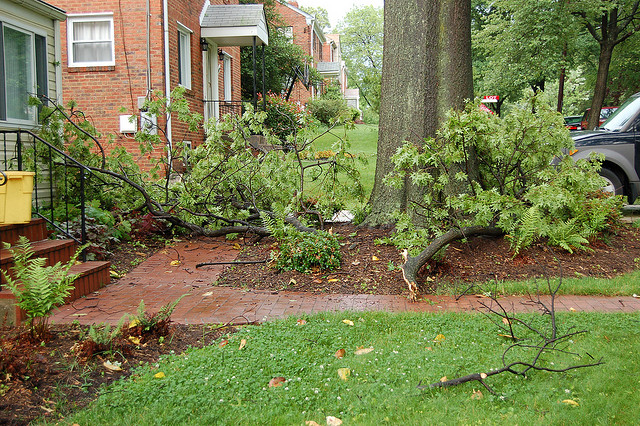Keep Your Landscape Looking Its Best
 Winter is hard on gardens. It's a time of severe weather -- storms, snow, hail, and wind. Couple that with sudden unexpected thaws and you've got a recipe for garden damage. The good news is that February is the ideal time to make a landscape damage survival plan. Here's how to deal with winter's effects on your lawn and garden.
Winter is hard on gardens. It's a time of severe weather -- storms, snow, hail, and wind. Couple that with sudden unexpected thaws and you've got a recipe for garden damage. The good news is that February is the ideal time to make a landscape damage survival plan. Here's how to deal with winter's effects on your lawn and garden.
Repair for a Winter-Damaged Lawn
Start planning now for a fuller, healthier lawn this summer ... even in that annoying "bald patch" where grass just doesn't seem to grow. Aerate and dethatch your lawn to promote oxygen penetration and healthy growth. You may also need to reseed, repair turf, or completely re-sod. A helpful method of landscape repair is the application of black dirt, which is known to be excellent at both drainage and water retention. It is the richest soil in nutrients available and will improve the health of all your plantings, whether lawn, flowers, vegetable gardens, or landscaping.
Alternatively, you may decide that this is the year you'd like to go with xeriscaping, a new method of gardening which will significantly reduce your garden water consumption.
Treatment of Trees
One of the most difficult aspects of winter affecting your trees and other plants is the severe fluctuations in temperature and rapid transitions from freeze to thaw and back again. This can cause two common types of distress to the bark of trees on your property -- sunscald and frost cracking. The best way to treat these conditions is by removing injured bark with a sterilized knife and keeping the wound clean. Do not apply any type of tree wound tar, paint, or sealant but leave the wound exposed to the air to let it heal more rapidly. In future, cover the trunk in tree wrap to protect it during the coldest part of the winter.
Branches and even entire trees may have been felled by winter storms. Have any broken branches pruned as soon as possible, since they are hazardous to human beings and property. (Winter is the ideal time for trimming, as this is less traumatic to trees in their dormant season.) Be especially cautious if branches are in danger of contact with electrical power lines. Pruning and cutting up deadwood is a tricky job, best left to local landscapers who are professionals with these types of tasks.
professionals.
Care for Damaged Plants
Frost heave, which is due to cycles of freezing and thawing of the garden soil, can push small plants from the ground. Cover the roots and replant as soon as the soil is soft enough.
In addition, plants may be affected by salt burn from deicing agents. When the weather begins to warm, lightly spray their leaves to remove salt; then flush the root systems with larger quantities of water come spring. Application of gypsum can help to amend the excessive saltiness of the soil. Gently trim brown or spongy parts of herbaceous perennials suffering from desiccation or frost damage.
Renew your mulch every year or two. This will help protect your plants, keep weeds under control, and improve the appearance of your garden beds.
Maintain Hardscape and Equipment
Another important garden maintenance task is repairing your hardscape and equipment. As soon as the weather permits, mend garden structures such as retaining walls, paths, patios, statuary, trellises, fencing, or solar panels and other lighting systems that have been harmed by harsh winter conditions. Make sure your irrigation system is in top shape and ready for the spring season. Check tools such as your lawn mower to see whether they are in good working order. Tune up if necessary and make a shopping list of any equipment you may need to purchase or rent to help you in your landscape repair work.
Laura Firszt writes for networx.com.
Looking for a Pro? Call us (866) 441-6648

Landscaping Average Costs
Landscapers Experiences

Fast Professional Tree Service For My Crabapple And Persimmon

Friendly And Professional Lawn Service Earns My Loyalty



